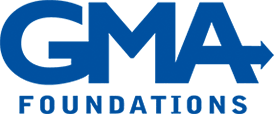
There is an emerging awareness of the concept of gender as a spectrum, with many possible expressions that don’t fit neatly into the traditional male-female binary. Last month we invited nonprofit leaders to join us for a discussion about the programmatic implications of shifting gender norms. Each guest represented an organization that offers gender-specific or gender-sensitive programming, and we discussed how this issue has affected their approaches to meeting the needs of the populations they serve.
Our guests shared some of the ways that their organizations are working to be more inclusive. Many expressed an awareness that gender-specific programs risk reinforcing the idea of gender as a strict male-female binary, but believe nevertheless that these types of programs are still much needed. While the concept of gender is more fluid than ever, many gendered expectations and prejudices persist, and gender-based violence continues to be a significant problem.
Awareness, sensitivity, and inclusion
Gender intersects with race, ethnicity, class, sexual orientation, and many other aspects of identity. As such, it is both complex and deeply personal. Organizations feel an obligation to meet clients where they are; the challenge is that clients’ felt and expressed needs are varied and changing. A mother may approach an organization to find an adult male mentor for her son, because she wants him to be “more of a man.” She may have very traditional views of what it means to be a man. How can an organization best meet such a client’s need without embracing rigid definitions?
On the other hand, most youth- and adult-serving organizations have clients who need a more progressive, more inclusive, less traditional approach. Individuals who question their assigned gender often begin to do so at an early age, and effective organizations will give their staff the tools and the language to respond with compassion and support. More than one of our guests talked about the necessity of establishing internal policies of inclusion in addition to sensitivity training for staff and volunteers.
The role of funders
Organizations are working hard to approach gender issues in an inclusive and sensitive way, and doing so often requires dedicated effort, education, and training. Our guests see funder support for this form of capacity building as crucial. Many funders may be wary of contributing limited resources to efforts that don’t have immediate, tangible results, but come to recognize that fostering expertise in such things as gender-spectrum sensitivity ultimately helps organizations to better serve their clients.
Funders have an opportunity to model gender sensitivity and inclusivity, beginning with examining how their own policies, practices, and language may unintentionally reinforce traditional ideas of gender. If funders hope to see nonprofits change the ways they think and talk about gender to cultivate a more compassionate world, then they also should work to be more sensitive and inclusive, both internally and in their funding practices.
In the end, our conversation raised many more questions than it answered. It was nevertheless encouraging to hear from so many organizations that are engaging with this issue in such thoughtful and compassionate ways.
Hannah Blaisdell is a program officer with GMA Foundations. She can be reached at hblaisdell@gmafoundations.com
